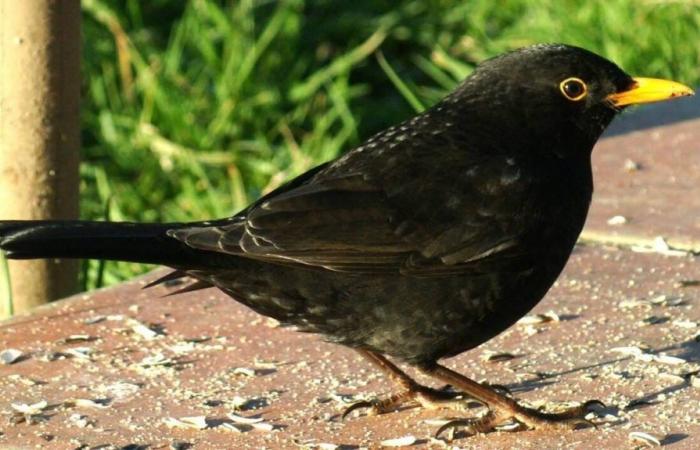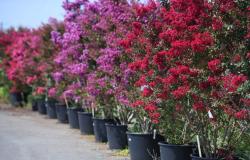Our societies are more urban than rural and knowledge of the nature that surrounds us is disappearing almost as quickly as biodiversity is eroding. Every week, Patrick Camus and Christian Fontaine, two inhabitants of the Auray region (Morbihan), scientists and teachers by training, help us rediscover plants and animals from the Alré region. Today, focus on the blackbird.
Black or brown?
The blackbird, er vouialh in Vannetais, is a common bird, present all year round in gardens and parks where it finds hedges to nest. The male is black with a yellow beak and yellow-ringed eyes. The female, or merlette, with chocolate-brown plumage, is often mistaken for a thrush. Lawns, woods and groves are its preferred habitats, in the city as well as in the countryside. Posted on a branch, it brightens the atmosphere early in the morning and late in the evening with its powerful, melodious and flute-like song. When disturbed, it flies away emitting a shrill and prolonged warning cry.
Loyal…for the season!
Pairs form for the breeding season. The male defends his territory, from winter onwards, with repeated short and loud cries. The cup-shaped nest, lined with fine plant material, receives, from February, two to three annual clutches of three to six bluish eggs speckled with brown.
Food and beliefs
Blackbirds feed mainly on invertebrates: insects, spiders and earthworms, but also on fruits and berries. The wild cherry tree, kelez mouilc’hi, in Breton, “blackbird cherry tree”, is often the victim. In winter, they scratch the ground, turn over piles of leaves in search of prey and also enjoy apples that have fallen to the ground or… on a platter!
Not trimming hedges and bushes between April and July and having short, natural lawns encourages its arrival. In Celtic culture, this black-plumaged bird is considered a divine animal that brings a message of wisdom and guidance.






